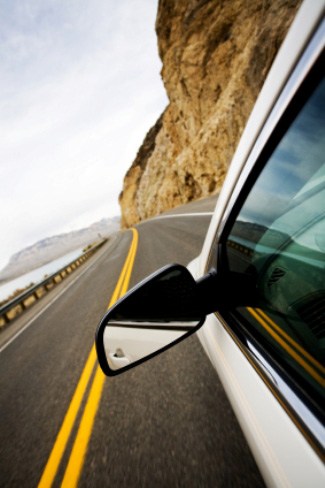What is a driving blind spot?
All vehicles have a blind spot – an area behind the driver that isn’t visible through the rear or side mirrors. But scientific advances and high-tech offerings may lessen the effect of the blind spot, preventing accidents and possibly lowering auto insurance premiums in the process.
Blind spots not only make it more dangerous to switch lanes, but they contribute to an estimated 228 deaths and 17,000 injuries caused each year by back-over accidents (when vehicles back into pedestrians or bicyclists), according to the Insurance Institute for Highway Safety (IIHS).
Increased traffic congestion makes it more likely that a vehicle is in your blind spot at any given time, says Andy Sarkisian, safety planning and strategy manager at Ford. Another factor adding to the danger is that many older and not-so-fit Americans find it difficult to turn their bodies to look behind them, Sarkisian says.In fact, according to a study by the American Psychological Association, a failure to check the blind spot was the most common mistake made by drivers between age 70 and 88.
 But science can potentially cut down on some of the danger. Assuming that the technology works perfectly,“we estimate that nearly 400,000 crashes could be prevented or mitigated if blind-spot detection was on every vehicle on the road,” says Russ Rader, a spokesman for IIHS.
But science can potentially cut down on some of the danger. Assuming that the technology works perfectly,“we estimate that nearly 400,000 crashes could be prevented or mitigated if blind-spot detection was on every vehicle on the road,” says Russ Rader, a spokesman for IIHS.
Blind-spot detection advances
There’s no shortage of blind-spot detection products and systems. In June 2012, a Drexel University mathematics professor, R. Andrew Hicks, received a patent for a curved mirror that reduces the blind spot more than today’s flat driver’s-side mirrors do. One drawback of most curved mirrors is that they can distort the appearance of objects, such as making straight lines appear curved. However, the distortions created by Hicks’ mirror are barely detectable, according to Drexel.
Despite the patent, it’s unlikely that Hicks’ mirrors will be installed on new cars in the United States in the near future. Why? U.S. regulations require that new cars sold in this country be equipped with flat mirrors on the driver’s side.
Meanwhile, auto manufacturers have increased their offerings of blind-spot detection products. Since 2008, Ford has let drivers of some of its cars install a radar-based Blind Spot Information System. “Whenever there’s a vehicle that the radar notices (in the blind spot), a little yellow LED in the outside mirror lights up,” Sarkisian says.
Among the vehicles that offer the option are the Ford Fusion, Taurus and Explorer, and the Lincoln MKS, MKT and MKX. The company equips other vehicles with a small convex mirror in the upper corner of the traditional mirror, which is designed to cut down on the blind spot “so in one form or another every one of our vehicles has expanded blind-spot detection features,” Sarkisian says.
In 2009, according to research company AutoPacific, 33 percent of new car buyers wanted blind-spot detection. Three years later, that number jumped to 59 percent.
New features typically are rolled out to luxury buyers before they make it to less expensive vehicles. In fact, the “highest demand for blind-spot detection is in the large and luxury crossover or large and luxury SUV market,” says Daniel Hall, vice president of AutoPacific. In those segments, more than 70 percent of new vehicle buyers want blind-spot detection technology.
Effect on insurance costs uncertain
Many factors go into determining car insurance rates, including your driving record, geographic location and vehicle type. Insurers charge lower rates for vehicles with better safety records, so any technologies that reduce the number of crashes can pay off for consumers.
While the IIHS has high hopes for blind-spot detection technology, the data on its use is mixed, so the organization is unable to determine its effectiveness yet, Rader says.
Even if blind-spot detection technology does lead to a decrease in accidents, that doesn’t mean it will lead to lower auto insurance premiums. According to a study by IIHS, the average cost per insurance claim often increased for owners of cars with high-tech crash avoidance features even though the number of accidents decreased. This occurred because the new technology made the vehicles more expensive to repair.
While the jury is still out on which types of blind-spot detection systems work best, drivers should use caution regardless of what type of technology they have. “There really is no full replacement for an alert and attentive driver,” Ford’s Sarkisian says.
